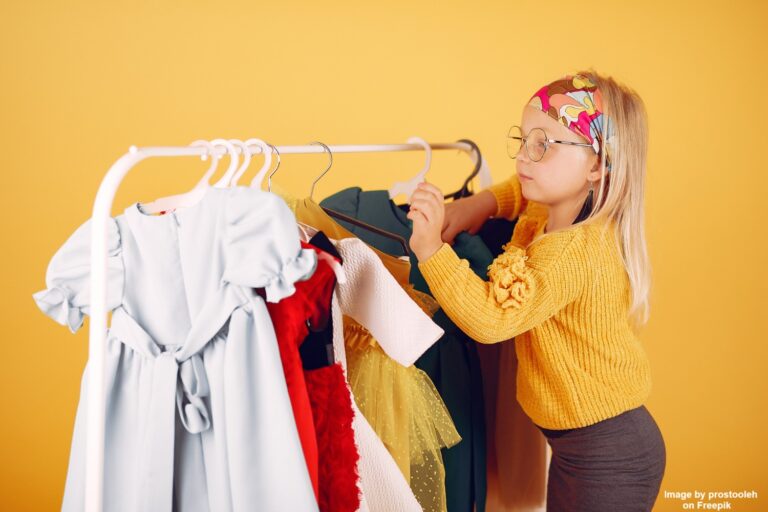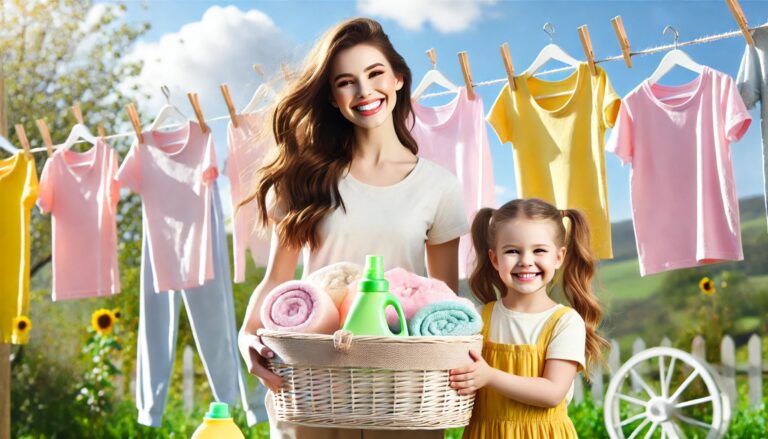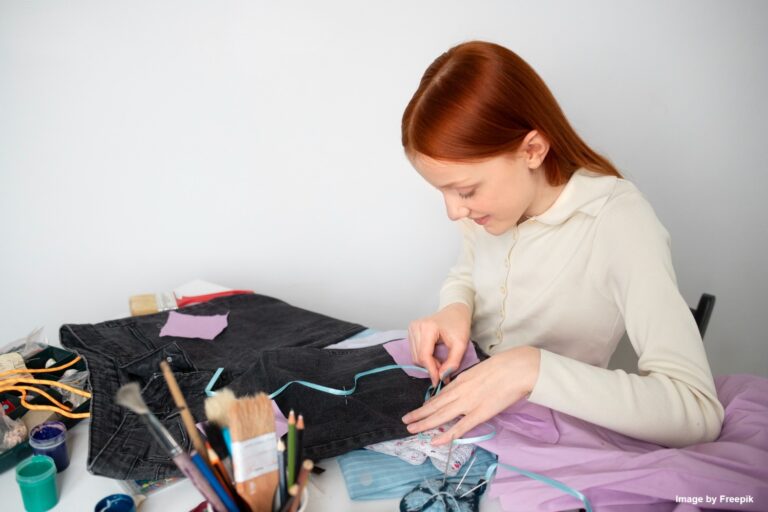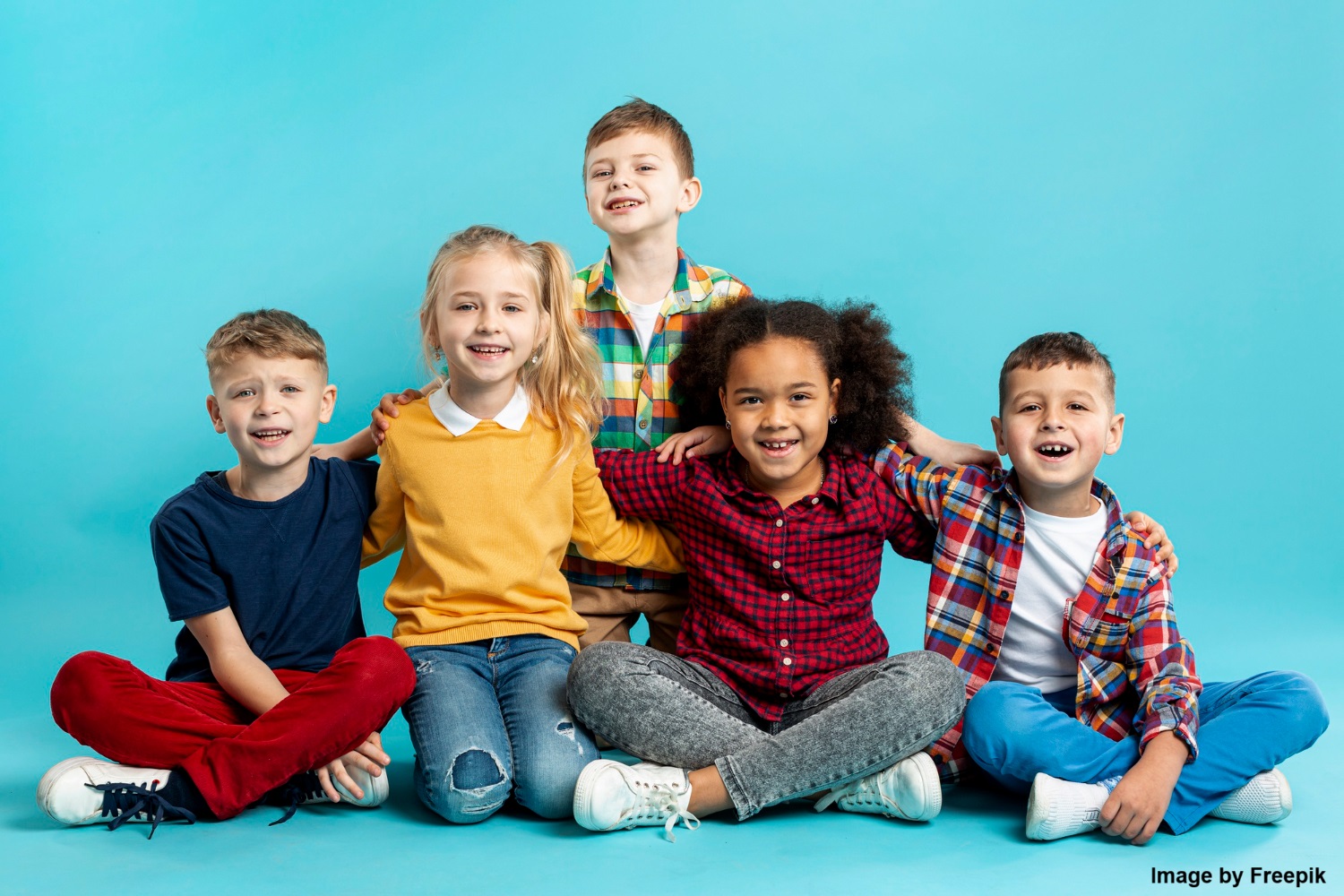What’s a better way to encourage kids to be more environmentally conscious than dressing them in eco-friendly fashion? With this knowledge, children can walk proudly, knowing their clothes contribute to a greener future.
But how do you ensure your little one’s wardrobe is both stylish and sustainable? In this guide, we’ll explore the impact of kids’ fashion on the environment and show you how easily you can adopt sustainable style for your children. Buckle up for an insightful guide to eco-friendly kids’ fashion!
Jump To:
ToggleWhy Eco-Friendly Fashion for Kids Matters
The Impact of Kids' Fashion on the Environment
Children’s fashion is often fast fashion, characterized by frequent turnover and disposable clothing. This leads to high resource consumption, waste, and pollution. According to a report by the United Nations Environment Programme (UNEP), the fashion industry is responsible for 10% of global carbon emissions. Synthetic fabrics, like polyester, release microplastics into oceans, harming marine life. Choosing sustainable kids’ clothing reduces this environmental impact by focusing on eco-friendly materials and production practices.
Benefits of Choosing Sustainable Clothing for Kids
Switching to sustainable kids’ clothes has several advantages:
- Reduced Carbon Footprint: Sustainable brands often use organic materials and eco-friendly processes, lowering their carbon emissions.
- Safety for Sensitive Skin: Organic kids’ clothing is free from harsh chemicals, making it safe for children’s sensitive skin.
- Supporting Ethical Brands: Buying from ethical children’s fashion brands ensures fair labor practices and a positive social impact.
What to Look for in Sustainable Kids' Clothing
Key Features of Eco-Friendly Kids' Fashion
To build a sustainable wardrobe, look for these key features:
- Materials: Opt for organic cotton, bamboo, or recycled fabrics. These materials are not only gentle on the environment but also on your child’s skin.
- Ethical Production: Choose brands committed to ethical production, ensuring workers are treated fairly and paid justly.
- Durability and Comfort: High-quality, durable fabrics last longer, reducing the need for frequent replacements. Plus, they offer comfort for active kids.
Certifications and Labels to Trust
Certifications help you identify truly eco-conscious clothing for toddlers and kids. Look for labels like:
- GOTS (Global Organic Textile Standard): Guarantees organic status and ethical production.
- Fair Trade: Ensures fair wages and safe working conditions.
- OEKO-TEX: Indicates the product has been tested for harmful substances.

Tips for Building a Sustainable Kids' Wardrobe
Start with the Basics
Focus on essential items that can be mixed and matched. Think of neutral-colored tees, versatile leggings, and a warm, eco-friendly jacket. Starting with basics ensures each piece is worn frequently, reducing the need for excessive clothing.
Choose Versatile Pieces
Select clothing that grows with your child. For instance, adjustable waistbands, roll-up sleeves, and stretchy fabrics allow garments to be worn over multiple seasons, minimizing waste. Eco-conscious clothing for toddlers and kids should be adaptable and long-lasting.
Upcycle and Hand-Me-Downs
Upcycling old clothes into new outfits or accessories is a creative way to refresh a wardrobe without buying new items. Similarly, hand-me-downs from siblings or friends are a sustainable and cost-effective way to dress your little ones.
Top Brands for Eco-Friendly Kids' Fashion
Here are some top brands leading the way in sustainable kids’ fashion:
- Mini Rodini: Offers playful and organic kids’ clothing with GOTS certification. Their collections include everything from organic cotton tees to recycled swimwear, designed with fun prints kids love.
- Frugi: Uses GOTS-certified organic cotton and recycled materials in fun, colorful designs. Frugi offers not only clothing but also outerwear and accessories, all crafted with sustainability in mind.
- L’ovedbaby: Offers GOTS-certified organic cotton clothing for babies and children. L’ovedbaby’s range includes a variety of options, from cozy onesies to comfortable loungewear, all created with ethical production practices and eco-friendly materials.
Band of Rascals: This brand offers eco-friendly kids’ fashion made from GOTS-certified organic cotton. Their collection showcases stylish, durable and comfortable designs. All their clothes are made in Europe with a focus on ethical production.

How to Care for Sustainable Kids' Clothes
Proper care extends the lifespan of sustainable kids’ clothing. Most clothing comes with care labels that provide instructions to maintain fabric quality. However, here are additional tips to ensure longevity:
- Wash in Cold Water: Washing clothes in cold water preserves fabric quality and reduces energy usage, as per the instructions on many sustainable garments.
- Air Dry: While care labels often suggest air drying, it’s worth reiterating. Avoid the dryer to prevent fabric wear and tear, which is particularly important for organic and delicate materials.
- Store Properly: Fold or hang clothes according to label instructions to maintain their shape and longevity. Proper storage helps prevent damage, ensuring clothes are ready for use when needed.

Encouraging Kids to Embrace Sustainable Fashion
Make sustainability a pleasant pastime for kids with these fun activities:
- DIY Projects: Involve your child in upcycling old clothes into new creations. For instance, transforming an old t-shirt into a tote bag can be an exciting project.
- Personal Choice: Let kids pick out their favorite sustainable pieces, making them more invested in their wardrobe. When children choose items they love, they’re more likely to care for them and understand the value of sustainable fashion.
Conclusion
Adopting eco-friendly kids’ fashion is easier than it seems. By choosing sustainable materials, supporting ethical brands, and embracing creative wardrobe solutions, you can dress your little ones in style without compromising the planet. Each small change contributes to a healthier environment and sets a positive example for the next generation. Start building a greener future with your child’s wardrobe today, and make every outfit a step towards a healthier planet.
Key Takeaways
- Conventional kids’ fashion contributes to environmental issues.
- Eco-friendly kids’ fashion reduces carbon footprints and supports ethical practices.
- Look for key features like organic materials, ethical production, and durability.
- Build a sustainable wardrobe with basics, versatile pieces, and upcycled clothing.
- Choose top sustainable brands and care for clothes to extend their life.
- Make sustainable fashion fun and engaging for kids.
Ready to make a change? How do you plan to incorporate eco-friendly fashion into your child’s wardrobe? Share your thoughts in the comments below!


